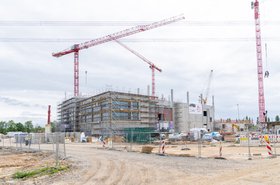Researchers from Californian Universities have proposed "information batteries" to make better use of intermittent renewable energy sources.
Because solar and wind power are so variable, they don't always match peaks in demand. A research paper has proposed that "opportunity power" which would otherwise go to waste could be used to "speculatively" perform computations in large data centers, and the stored computed results could be retrieved when green energy is less plentiful.
Saving dumped power
"The way things are going, in five years, the amount of renewable power wasted in California each year will be equivalent to the amount of power L.A. uses each year," says Barath Raghavan, assistant professor in computer science at USC Viterbi School of Engineering, quoted in an article from Science Daily and University of Southern California (USC).
The energy industry is working to improve ways to store energy for long periods to smooth out the supply and help match demand. But using surplus renewable energy for computation could also help, according to a paper in the ACM Energy Informatics Review. by Raghavan and Jennifer Switzer, a Ph.D. student from UC San Diego.
"We had the observation that if we can predict possible computations that might occur in the future, we can do those computations now, while there is energy available, and store the results, which now have embodied energy," says Raghavan. One example he quotes is YouTube, which transcodes more than 700,000 hours of videos to different resolutions, every day. As this is predictable, it could be time-shifted to periods when there is excess green energy.
The idea is similar to a 2020 project in which YouTube owner Google tested shifting data center workloads to use renewable energy. Google's proposal was for tasks like translating dictionaries for Google Translate.
Raghavan explains the "information battery" term by explaining that batteries convert one type of energy into another for storage, for instance turning it into gravitational potential energy or using it to compress air. She refers to the stored calculations as "informational potential energy."
If the tasks pre-computed don't quite match what's needed, then small parts of the computation can be reassembled, for a new task, she says, "like puzzle pieces".
To attempt to compare information storage with that of lithium-ion batteries, the pair made a distributed system using "compiler toolchains, key-value stores, and other important elements in modern hyper-scale compute," augmenting the compiler for the Rust language, to enable precomputation and caching.
The paper looks at the overheads introduced and the issues of predicting power levels and computing jobs, using recurrent neural networks to predict the future availability of renewable energy and upcoming tasks in data centers.
"With this system, companies would be using power that would have been dumped, and everybody else benefits because the grid operator doesn't have to spin up natural gas power in the evening hours to compensate for demand," says Raghavan.




